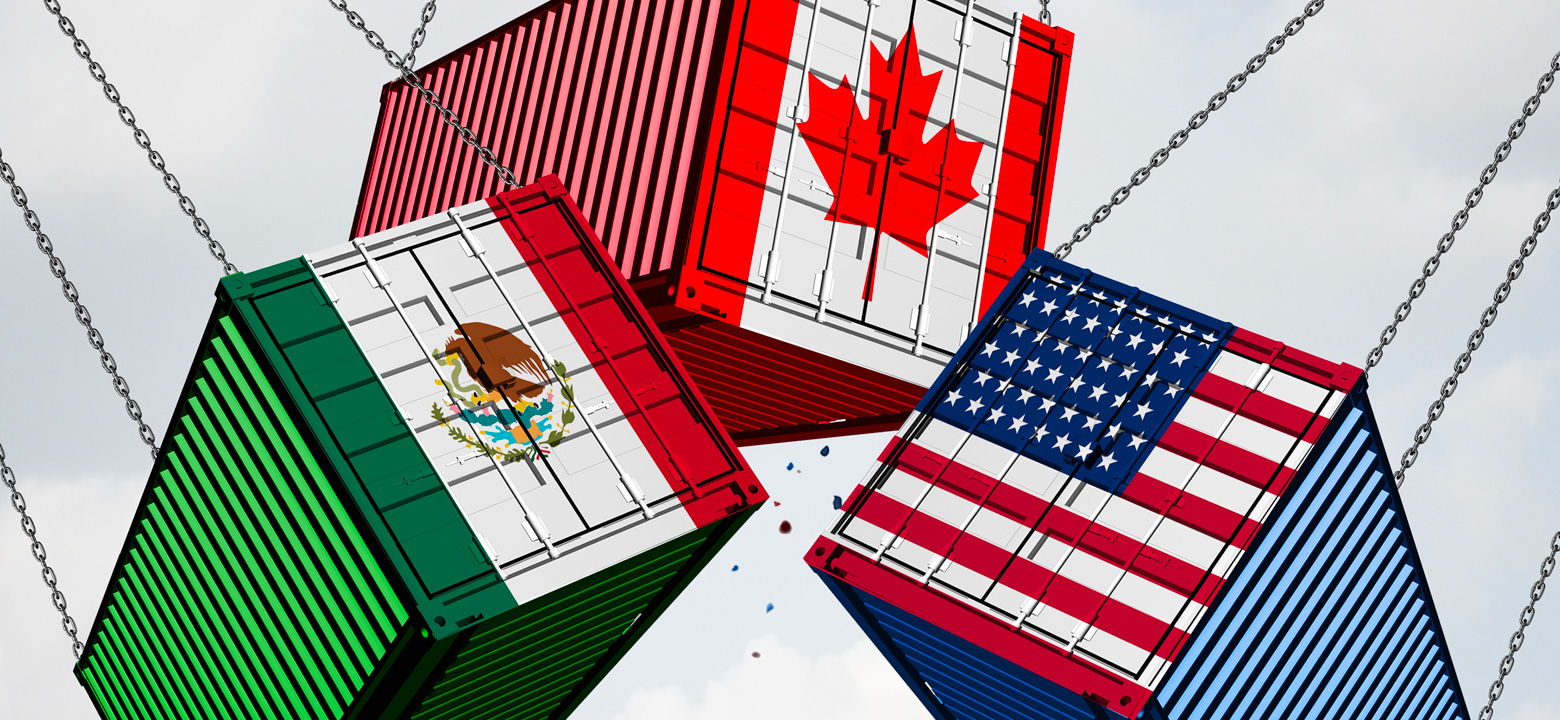
For a long time, the North Atlantic Free Trade Agreement (NAFTA) was villainized for costing US workers jobs and suppressing wages. Now, the United States-Mexico-Canada Agreement is an updated treaty that seeks to address some of the problems of NAFTA, as well as update it to modern trade. What is this treaty, and how is it going to affect manufacturing?
USMCA stands for United States-Mexico-Canada Agreement. It's intended to be a replacement for the North Atlantic Free Trade Agreement, which went into action under President Clinton in 1994. NAFTA has earned criticism, including that it isn't able to account for the ways that the internet has changed how we conduct business. The new trade agreement intends to rectify the deficiencies in NAFTA, and allow for growth within the member countries.
NAFTA reduced tariffs between participating countries, which had the benefit of opening up new markets to US-based manufacturers. Critics pointed out that the lack of tariffs also had the effect of encouraging companies to move their production facilities to countries with a cheaper labor pool. Proponents said that NAFTA allowed each country to best utilize its advantages, whether that was inexpensive skilled manufacturing in Mexico, or research and development in the US and Canada.
USMCA was designed to reduce the incentive for companies to move their production to Mexico. It also takes into account the changing trade landscape by including provisions for downloadable goods and e-commerce.
Like NAFTA, USMCA allows for free trade between the US, Mexico, and Canada. It also allows companies to store digital data wherever they please, instead of requiring them to keep it within their national borders. The agreement also makes it easier for Mexican workers to unionize without reprisal. This could allow them to negotiate for better pay, ending their status as a source of cheap labor. US farmers will also get less restricted access to the Canadian market.
Tariffs under the USMCA are largely structured to incentivize keeping production jobs within the US. For automakers, as an example, failing to source enough domestically-produced parts and labor could end up costing them an additional $3 billion in tariffs over the next ten years.
Many manufacturers welcome the new agreement, primarily because it alleviates uncertainty. Uncertainty is a killer for manufacturing, in particular—supply chains are long and complex, and upheaval can force manufacturers to have to try to source necessary parts and material on the fly. Having a trade agreement in place helps alleviate many of the fears related to interrupted supply chains.
Some manufacturing sectors may fare better under USMCA than they did under NAFTA. Equipment manufacturers anticipate growth under the new agreement, and look forward to duty-free access to their key export markets. Metalworkers look forward to the new agreement having a beneficial effect on the steel market. Others, like the automotive industry, are less likely to see major improvement.
While USMCA is designed to bring manufacturing jobs back to the US, it benefits employees more than employers. To qualify for duty-free benefits, automotive manufacturers have to source 75% of their content from within the US, rather than from cheaper international markets. At least 40% of the production would also have to take place in areas that pay employees at least $16 an hour, benefiting workers in the US and Canada, but increasing the overall labor cost.
US-based manufacturers will want to keep an eye on the requirements for benefiting from a duty-free status. As mentioned above, USMCA has strict requirements for domestically-produced parts and compensated labor, so manufacturers will want to do their homework before committing to a supply chain.
Opinions about USMCA are mixed. Proponents point out that it isn't a major change from NAFTA—a good thing, since upheaval and uncertainty can severely disrupt trade and manufacturing. Opponents point out that many of the provisions will increase the cost of goods for consumers, and the agreement does nothing to address climate change or encourage sustainability. Some experts have also pointed out that NAFTA was only responsible for a small minority of job losses—the rest were due to automation, something that USMCA doesn't address.
While it's unlikely that USMCA will ever be able to bring back all of the jobs displaced by NAFTA and automation, it may still be good news for many manufacturers and their employees. By improving the ability to unionize for Mexican people, pushing companies within the US to use US parts and labor, and taking data storage and e-commerce into account, it may be able to help spur growth in the US manufacturing sector.